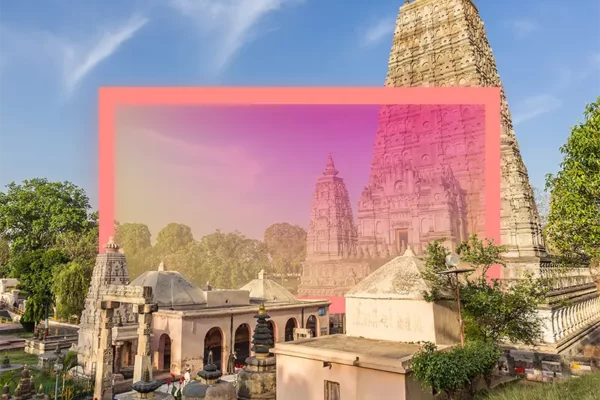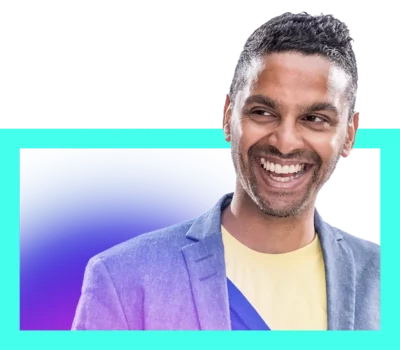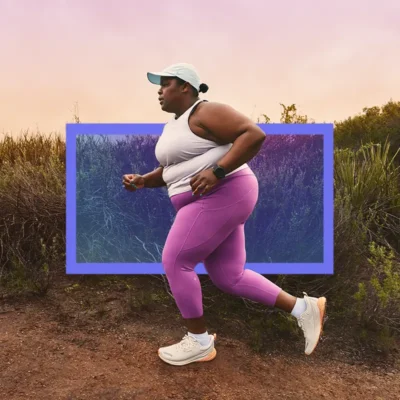How I found kindness as my compass
By the time Sharon Salzberg is 16 years old, she knows the people around her don’t admit to suffering, much less talk about it. A year later, she makes a life-changing decision to travel alone to India to study meditation. It doesn’t all go as expected. Through the journey’s disappointments, discomforts, and surprise lessons, she finds an unexpected friend: herself. In today’s Meditative Story, Sharon talks about how being kind, especially to herself, became her biggest mountain to climb.


Table of Contents:
Transcript:
How I found kindness as my compass
SHARON SALZBERG: Joseph seems to radiate equanimity and balance. Of course the difference between Joseph and me is that he’s been meditating for four years, and I’ve been meditating for maybe four days.
So when Joseph says, “Yeah, it was a hard morning. But that’s okay,” it isn’t the voice of apathy. It’s the voice of experience. It’s saying, “Some difficulty is normal.” And this is exactly what I’m here to learn. I’m just so desperate to figure it out fast — to beat down my sorrow. And he’s like, “Give yourself a break.”
ROHAN GUNATILLAKE: By the time Sharon Salzberg is 16 years old, she knows the people around her don’t admit to suffering, much less talk about it. A year later, she makes a life-changing decision to travel alone to India to study meditation. It doesn’t all go as expected. Through the journey’s disappointments, discomforts, and surprise lessons, she finds an unexpected friend: herself. In today’s Meditative Story, Sharon — who I must confess to being a hero of mine — talks about how being kind, especially to herself, became her biggest mountain to climb.
In this series, we combine immersive first-person stories, breathtaking music, and mindfulness prompts, so that we may see our lives reflected back to us in other people’s stories. And that can lead to improvements in our own inner lives.
From WaitWhat, this is Meditative Story. I’m Rohan, and I’ll be your guide.
The body relaxed. The body breathing. Your senses open. Your mind open. Meeting the world.
SALZBERG: When I board the train from New Delhi to Gaya, I have no idea how to find my seat. Families crowd into the cars, and people keep trying to sell me chai. It’s really hot. I finally find my seat: a wooden bench in third class where I’ll spend the next 17 hours.
It’s my first time in India, and really — my first time almost anywhere. It’s 1970; I’m 18 years old. And before this trip, the longest train I’ve ever taken was the subway from one part of Manhattan to another.
The old man next to me keeps trying to start a conversation about philosophy. He has a long white beard and large, intense eyes.
“What’s your purpose?” he asks me.
I have no idea what to say. I mumble something and look out the window. Yes, I’ve come to India to study, but I’m not really interested in philosophy. It’s the how-to I want. I’ve heard about how powerful meditation is, and I’m looking for instruction. I’m hoping it might be like paint-by-numbers: “Do this and then this” — and you’ll have the keys to releasing unhappiness.
So far, though, I’m not having much luck. I’ve been in India for several weeks and nothing is working. I thought there’d be teachers on every corner who’d teach me meditation. There are not. I feel the pressure of time passing. Why can’t I find someone to teach me?
So now I’m riding this train with a few other students I’ve met along the way. We’re traveling together from New Delhi to BodhGaya for an intensive 10-day retreat we heard about.
As the train pulls into Gaya, the sun is setting. My back hurts from being on that wooden plank all night and day. We pour out of the train into the station. People crowd around us. Women wear saris the color of eggplant and persimmon. Men in loose pants steer bicycles through the station. The station smells like smoke and tea and ripe fruit. It’s a press of humanity — and I’m not at all sure that this is a good idea. How did I get here?
A year earlier, I’m sitting in a college classroom in Buffalo, New York. Outside, on the university green, you can hear the chants of students protesting the Vietnam war. Inside, the girls wear flowered skirts and the boys have long hair and ripped jeans. There’s maybe 30 of us. We’re really a bunch of hippies.
It’s my sophomore year, and I’m in an Asian philosophy class. I’m taking it by accident, really. It fills my philosophy requirement. It fits my schedule.
Much of the course focuses on the tenets of Buddhism. The professor paces at the front of the room and tells us: “The Buddha taught that suffering is natural and universal.”
He says this as if it’s the most obvious thing in the world. I look around; the rest of the class seems unfazed. But I’m suddenly very attentive. I have not been holding the idea that suffering is universal. I tend to think it’s just me.
My childhood is difficult. My mother dies when I’m 9. By then my father is gone too. He has a breakdown. He’s in psychiatric hospitals. So I’m left in the care of grandparents who don’t really tell me what’s going on. My world is full of secrets. I’m sure every other family is perfect, like the ones on TV. I feel deficient. I turn down entrance to a special high school because I’m too afraid to go. I feel alone, afraid, frozen. I’m always waiting for the other person to take action, to get the prize.
So when I hear the professor say that suffering is universal — that it’s even a natural part of life — it wakes me up. It starts to change the way I see myself. I begin to wonder, what’s going on behind the closed doors in all those other houses. For the first time, a new thought crosses my mind: I might be normal.
GUNATILLAKE: Being normal. How do you relate to that? Is there a sense of aspiration here, like Sharon? Or is there something else?
SALZBERG: The teacher introduces the idea of meditation. He explains that there are practical things you can learn to do with your mind that will help you be happier. I’m intrigued. But it’s 1970 in Buffalo, New York. And there isn’t anywhere I can find for me to learn more.
My curiosity about meditation is powerful enough that it propels me to do something I’ve never done before: I make a bold move. I propose an independent study project in India — one year abroad where I’ll learn to meditate. Four days before I’m set to leave, I learn that a Buddhist teacher is coming to town.
It’s Chogyam Trungpa Rinpoche, and I go to hear him lecture. At the end, he asks for questions. I write mine down on a piece of paper, fold it up into a triangle, and hand it in. There’s this big pile of questions in front of him, and he pulls out my piece of paper. It asks: I’m about to leave for India. Where should I go to study Buddhist meditation? I’m hoping for a recommendation.
He glances at the paper and looks up. He’s quiet for a few moments. Then he says, “Perhaps you’d best follow the pretense of accident.” The pretense of accident. What does that even mean? I guess it means mostly: He’s not giving me any addresses. And also, he doesn’t want it to be easy.
I fly from New York to London and take the train — the Orient Express — to Istanbul to travel overland to India.
I travel first to Daramshala because I hear the Dalai Lama lives there, and I know he’s a Buddhist. But I don’t find an actual meditation class happening regularly there. In a Tibetan restaurant, I overhear a conversation about a yoga conference in New Delhi. So I think: “Oh, I’ll go there. And I’ll find my teacher.” The conference is terrible. But one of the speakers is an American named Dan Goleman. Years later, he’ll popularize the term “Emotional Intelligence.” But right now, he’s a grad student in psychology, learning what he can in India. Dan mentions that he’s headed to a place called Bodh Gaya for an intensive 10-day meditation retreat. Bodh Gaya is the very site where the Buddha reached enlightenment under the Bodi tree. Maybe this is the “pretense of accident” I’m looking for. I take Dan’s advice and buy the train ticket to Gaya.
The streets of India can’t be more different from my own experience growing up in the U.S. In my family, we never say a word like “cancer” out loud. We whisper it. But here, life just spills out before us, joys and sorrows both. Here, I see people in the station who are terribly poor, who are terribly sick. And they’re not hiding anything from anyone. I’m frightened. But I also feel the rumblings of something different. The thrill of being somewhere with no apparent secrets — where there’s permission to acknowledge suffering.
We walk out of town along a dry river bed and arrive at the gate marking the Burmese Temple. Shuffling through the gate with our backpacks, we find a garden growing banana plants as tall as a house. There’s a two-story, brick building with a large veranda, and the place is already crowded with students. The men go up to the roof where they sleep under a large tent. The women, we unroll our sleeping bags in the hallways where we’ll sleep for the next week. There are no rugs. Eventually we hang up saris on clothes lines between us for a little privacy.
I’m new to meditation, but I know some of the people here are important — for example Ram Dass, the former Harvard professor who’s now a spiritual seeker. He’s only 39, but he seems old to me with his shiny, balding head and full graying beard.
Our first meditation session takes place in the temple library. Book shelves lean against most of the walls with baskets and boxes piled on top. The room is crowded — about 70 of us sitting on the floor in circles around the teacher, who sits cross-legged at the front. I sit way in the back on the bare wood floor, leaning against a bookcase.
Our teacher, Goenka, welcomes us in his opening talk. He says. “The Buddha did not teach Buddhism. The Buddha taught a way of life. And so everyone is welcome here. You don’t have to become a Buddhist.”
Then we start to meditate. And it’s so painful. I sit cross-legged on my rolled-up sleeping bag, and I’m incredibly uncomfortable. It feels like we sit for 6,000 years, but it’s just 45 minutes. By the end, I’m exhausted and hot, and my knees hurt. But I know, underneath that, this is where I need to be.
I think back to what Chogyam Trungpa Rinpoche told me in Buffalo: “follow the pretense of accident.” I’ve followed a series of accidents here. An overheard conversation in a restaurant. A disappointing conference, yet with one speaker who changed my life. The only thing I can stay close to is my intention: I’m going to learn some way to be happier.
GUNATILLAKE: Have periods of your life ever felt like a series of accidents? Let’s remember these times and join Sharon in her reflection.
SALZBERG: A few days into the retreat, our teacher tells us: “This session, we’re going to sit with determination. We’re not going to move.” And I move within seconds. This is impossible for me. I’m doing it all wrong. I can’t concentrate. I’m so frustrated. I need this to work, to fix me. And I only have a few days left in the retreat to get it right. I actually say to myself, “The next time your mind wanders, you should just bash your head against the wall.” I’m just so disappointed with myself.
Just then, the lunch bell rings. I get in line, and someone behind me asks this other guy: “How was your morning?” An American voice replies in the calmest possible way:
“Oh I couldn’t focus at all in my meditation. But this afternoon, I’ll probably be better.”
I’m horrified. I think, “What’s wrong with him? He’s so cavalier.” I feel worried for him. Like, “Don’t you understand? You can become liberated if you take this seriously.” I spin around, full of judgment, to see this tall gangly American with short dark hair and an unshakable calm. And this is how I meet Joseph Goldstein.
Joseph seems to radiate equanimity and balance. Of course the difference between Joseph and me is that he’s been meditating for four years, and I’ve been meditating for maybe four days. So when Joseph says, “Yeah, it was a hard morning. But that’s okay,” it isn’t the voice of apathy. It’s the voice of experience. It’s saying, “Some difficulty is normal.” And this is exactly what I’m here to learn. I’m just so desperate to figure it out fast to beat down my sorrow. And he’s like, “Give yourself a break.”
I don’t know it at the time, but Joseph will become one of my dearest lifelong friends and collaborators. And it starts with these conversations in the lunch line and the hallways.
One morning during meditation, I feel a tide of anger rising inside me. It feels in my body like a rush of energy. This is the first time in my life I’ve been deeply introspective, so of course when I sit still and look inside, I unearth fear and anger. I don’t know yet that fear and anger are the same emotion in different forms. So it just consumes me. And then I get mad at myself for feeling angry. I think, “What kind of person meditates in this beautiful place and comes away angry? Everyone here is in rhapsody, they’re in bliss! And I’m in fury. What the hell is wrong with me?’”
After the meditation, I storm up to my teacher, Goenka, and say, “I never used to be an angry person before I started meditating!” — thereby laying blame exactly where I feel it belongs: on him. Clearly, it’s all his fault.
Goenka has this big head of thick gray hair and a round, soft, incredibly sweet face. But still I manage to scowl at him. And he looks at me, and he starts laughing. It’s not what I expect. But it doesn’t make me angrier. It just sort of lets the air out of my hot angry balloon. It makes me feel normal.
The laughter seems his way of saying, “Of course you feel anger. It is part of the process. There’s nothing wrong with it. There’s nothing wrong with you. The question is: What do you do with that anger? How do you act?” I understand all of this, even though he doesn’t say it.
And I also understand that he’s telling me: ‘’Feeling the anger is good. It’s good progress.” Because now I can actually notice the emotion.
It will take a while before I learn that the skillful response to feeling anger is to feel it. And then even to take an interest in it. I don’t have to let it carry me into action that I may regret.
But I already feel the lesson that life is teaching me over and over again: We all face challenges. It’s how we become who we are. You don’t have to judge yourself all the time. Give yourself a break.
I stay in India for more than a year. I return to the U.S. feeling I have something precious. I feel I have a path. It’s not totally fulfilled. And I know I’ll mess up along the way. But I have a path, a north star to guide my life.
When I get back to the states, I finish college and go right back to India to continue studying. Within a couple of years — after returning to the U.S. again — Joseph and I start leading retreats.
Kindness toward ourselves becomes central to my teachings. But it’s still one of my biggest mountains to climb. In 1976, Joseph and I — along with Jack Kornfield — open our retreat center in Barre, Massachusetts. At this point, I’ve never received formal instruction in loving-kindness meditation, so I just decide to do it myself for a month before we start teaching. Every day for a week, I meditate to: “May I be happy. May I be healthy and safe. May my heart know peace.”
I basically feel nothing, but I just keep doing it.
One day, after a week, I’m in an upstairs bathroom at our retreat center. And I’m rushing. It’s this small bathroom, no windows and dingey white tile. It feels tight and enclosed. As I get ready, I whirl around, and I suddenly knock this big glass jar of bath salts onto the tile floor. The jar shatters and stuff goes everywhere. And in this moment, the thought that comes up in my mind is: “You’re really a klutz, but I love you.”
And I think, “Look at that!” I thought nothing was happening, during all my loving-kindness meditations. But something was happening.
The problem of incessant self criticism is not just mine alone, of course. So many people suffer from it. Over time, we start suggesting to other people that they give their inner critic a name, give it a persona. Because everything is going to depend on how you relate to that inner critic.
Many years after starting the retreat center, I name my own inner critic Lucy — after the character in the Peanuts comic strip. I had seen a cartoon where Lucy is talking to Charlie Brown. She says to him, “You know, Charlie Brown, what your problem is? The problem with you is that you’re you.”
Not long after I see that cartoon — and name my inner critic Lucy — something really good happens for me. I flow effortlessly into a yoga posture that had eluded me for years. The first thought I have is: “It’s never going to happen again.”
And then I breathe. I respond to the thought with: “Hi Lucy. Chill, Lucy. Just chill out.”
It’s not, “You’re right Lucy. You’re always right.”
It’s not, “I can’t believe Lucy is still here after all this work.”
It’s: “Hi Lucy. Chill.”
I’m now aware of Lucy. And I know that my awareness is stronger than she is.
Nearly 50 years later, I’m still on this path. The North Star of awareness and kindness I found so long ago is deliberate and clear. Even when I lose sight of it for a bit, or overlook it, it’s ok. Because I have a direction. And I’ve learned that when I lose it, or fall down, I don’t have to call it a failure. I can see what has to be done to reconnect to my sense of purpose, to reorient to my North Star, and begin again. And the North Star is, truthfully, pretty simple to find again: Be patient, be kind, including — no, especially — to myself.
Rohan closing meditation
GUNATILLAKE: Thank you Sharon.
Ok full disclaimer: As I said up top, Sharon is a bit of a hero of mine. No actually, she’s a massive hero of mine. That I (and others like me) do what we do is in large part because she did what she did. The first generation of Western teachers such as Sharon and Joseph Goldstein, who trained in Asia and brought it all back to North America and Europe, are genuine pioneers. Modern mindfulness just wouldn’t exist as it does now without them. So when I say thank you Sharon, I can’t actually express the level of my gratitude to her.
So, all that means, leading a meditation to complement Sharon’s story feels a bit like writing a story for Salman Rushdie or cooking for Gordon Ramsey (without the swearing). But I’ll give it a go.
Oh yeah, maybe I should give myself a break, right?
And what we’ll do together is something quite close to what Sharon would have done in that first retreat of hers. Her teacher for that time, SN Goenka, is a hugely influential figure, and so let’s do a short meditation inspired by his core practice style.
And if you like, you can imagine yourself in that center in Bodh Gaya. I’ve been out there, and it’s a very inspirational place. It’s also really quite hot. So sit as comfortably as you can. Knowing that I am sitting with you, as is everyone else listening, all the other members of this community.
We’re here. Together. Our energy’s a warm glow.
When outside is a bit quiet, and inside is a bit quiet, we can sometimes know our breathing by the sensations at the tip of the nose. The subtle rush of air as it leaves the nostrils, warm. The intake of the air as it comes in.
It is subtle, but let’s put our attention here, and see if we can locate it with our awareness.
And if we can, resting our awareness, our attention here, at the tip of the nose. With face and shoulders relaxed. Our vast vast awareness in this relatively small area.
Setting this intention of resting our awareness at the tip of the nose, and noticing what happens.
Giving ourselves a break if needs be. And if there is a sense of stability here, however small, enjoying it.
Now, we’re going to do what is called a body scan. Moving our attention from here at the tip of our nose, here on our nostrils.
Moving it down the body, as slowly as feels ok for you. Knowing what is happening all along the way to the tips of our toes. Just knowing, not judging. Just knowing, with stability as our foundation. Interested in the detail, the fine structure. Moving the attention down to our toes.
Resetting. And slowly bringing the awareness back up through the body. Bringing as much awareness game as you can right now. Sensitive to the fine structure of sensations, knowing them and moving on.
Jaw soft. Self-judgment soft. And continuing to move your awareness through the body, slowly, with mind bright. Your mind knowing as much detail as it flows.
In meditation, giving ourselves a break is as much a skill as concentration or fine awareness. I remember a time when I quit a retreat in despair, angry at myself for not making the progress that I wanted, angry that I wasn’t doing it right.
Looking back at that time, I wish I had been more open, open to learning from what was there, not getting upset about what was not.
So thank you Sharon for reminding me about how kindness to ourselves is that which holds all wisdom together. And for your kindness over the years. You didn’t have to teach, but you did, and it changed everything. Made everything.
And thank you. You’re alright too.






